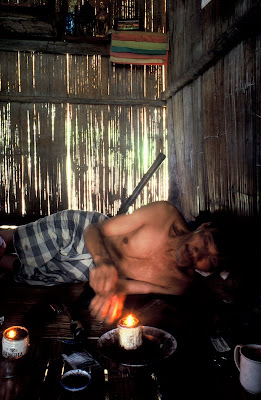Mustard greens are the ingredient for the som pak you see sold in bags wherever kao neeow is sold. Typicaly a small bag costs twenty cents or so, combined with sticky rice and something barbequed they round out a meal.
The following is mama’s method.
The leaves are washed then sprinkled with salt which is worked in with lots of turning over of the leaves and gentle squeezing to push the salt into the vegetable. A benign bruising if you will. To test for saltiness taste some of the water that collects at the bottom of the bowl. If too salty drain and add fresh water. Remember the rice water has salt too.
Rice is boiled with water and salt so that the rice breaks down, cooled, and then pushed through the fine strainer when added to the mustard greens. The whole concoction is put in a large jar and set on the counter to sour for a day or two. The reason for the screen is to keep out the rice grains themselves, they don’t look good.
I like the som pak plain with ginger and sticky rice, with scrambled eggs, and especially in the stock for the thin sour soup called gaeng som pak.




